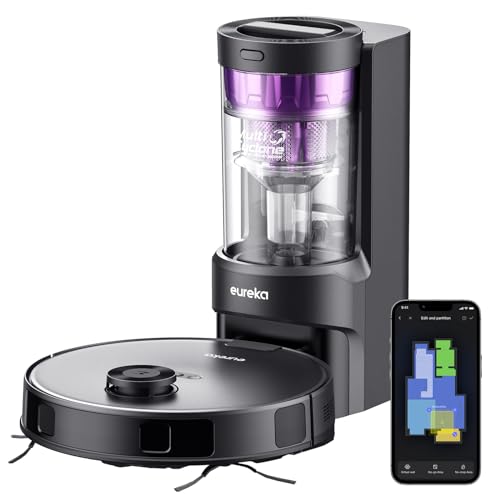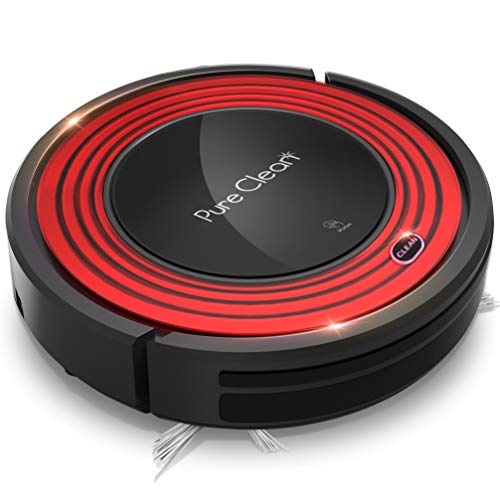Guide To Cleaning Robot Mop And Vacuum: The Intermediate Guide For CleвА¶
нОШмЭімІА м†Хл≥і
мЮСмД±мЮР Lien лМУкЄА 0к±і м°∞нЪМ 13нЪМ мЮСмД±мЭЉ 24-06-10 18:19л≥ЄлђЄ
 How to Take Care of a Robot Mop and Vacuum
How to Take Care of a Robot Mop and VacuumA robot mop and vacuum can save you much time in cleaning. They also require regular maintenance such as emptying the dustbins, cleaning the reusable cleaning pads in accordance with the manufacturer's instructions or removing the disposable ones and keeping the sensors cleaned.
App integration lets you create schedules and power modes and save maps and adjust settings.
1. Empty the Dirt Bin
The majority of robot vacuum cleaners require regular maintenance, which entails emptying dirt bins, washing pads and keeping track consumables to replace. The more you take care of these parts more often, the longer your robotic mop and vacuum will last. Certain cleaning robots require a bit of extra attention, especially those with water tanks.
First, make sure the dust bin is completely cleaned after every cleaning session. This is one of the easiest tasks you can accomplish, but it is crucial to the efficient operation of your robot. It is also important to clean your filter periodically. Consult your user manual to determine when you should clean your filters.
While the mopping function on your robot could eliminate a lot of dust from your flooring, there are some small particles that can accumulate in cracks and gaps on flooring. These include hair and skin particles such as mites, dandruff, dirt and pet hair. To keep these particles from causing health problems it is crucial to occasionally employ a vacuum cleaner or sweeping robots to clean these areas.
If you plan to use your robot mop, it is essential to select one with top-quality hardware as well as large water and dust tanks. LEGEE for instance has one of the largest dust bins as well as water tanks among its competitors, which means you won't need to stop cleaning or interrupt your robotic mop to refill the tank.
Also, don't put any floor cleaners or vinegar in your robot mop's water tank unless instructed by its manufacturer. These chemicals can harm your machine and void its warranty.
A robot mop and vacuum is a great method to free up your time so you can focus on other priorities such as your family or work. Certain stains and dirt are too hard for the robot to take on. It is also crucial to periodically do a full cleaning yourself using an ordinary vacuum cleaner to remove the tougher stains and clean areas that your robot will not be capable of reaching.
2. Clean the Cleaning Pads
Depending on what you use your mop robot for the pads can become dirty or even stained. It is important to wash your cleaning pads regularly. You can wash them by hand or in the washer alongside your normal laundry. Avoid using fabric softeners or dryer sheets, as these will reduce the absorbency of the pad and could cause it to stop working properly.
If your robot mop doubles as an air cleaner, it will require its dust bin to be cleaned and cleaned periodically. The same is true for hybrid models that vacuum and sweep with a dry mop pad. Many robot mops include brush attachments that must be cleaned.
You should always rinse the mop pads thoroughly to remove any dirt and grime. You can also soak them in warm water for several minutes to break loose any dirt that's stuck. After they're completely clean let the pads air dry or put them in the dryer on the lowest setting. It is recommended to clean your pads every 2 to 3 months.
During the cleaning robot mop and vacuum - my latest blog post - cycle, a mop or vacuum can often collect small particles that can cause damage to the sensors of your robot and other components. You can stop this from happening by wiping the sensors clean with a microfiber cloth every now and again. This will assist the robot navigate the room without bumping against furniture or walls.
The majority of robot vacuums and mops are equipped with sensors on their base that are used to detect obstacles and ensure the machine isn't caught in tight spaces. They can get clogged by dust and other particles which is why you'll have to keep them clean regularly.
Some robot vacuums come with an automatic cleaning cycle that you can run following every use. You can check the website of the manufacturer to determine whether this feature is available on your model. Typically, it will take about two or three minutes to complete this cycle and is available through an app or a button on the robot itself. This cycle should be performed frequently with a mop or vacuum to maintain the performance of sensors as well as other components.
3. Clean the Charging Station
Most robot mops spray cleaning solution directly onto the floor to soften stains and then scrub them off via the scrubbing pad. Some robot mops utilize a disposable mop pads, while others can be cleaned and reused. It is important to empty and wash your mop pads between cleaning sessions, regardless of whether they're disposable or reusable. Follow the manufacturer's instructions. Also, drain and let the mop base or docking station dry between uses to avoid mildew.
Robotic mops, as well as vacuum cleaners, require regular maintenance to ensure they operate smoothly. This includes emptying the dust bin, washing the pads and occasionally cleaning the sensors. If your robot mop is equipped with dirt detectors, you may have to wipe it down gently every few cycles to remove dust. This can cause the sensors to become blocked, leading to navigation errors.
Many robot mops include an app that lets you to save maps of your home and create cleaning schedules and keep track of when the machine requires maintenance. If you plan on purchasing a mop, look for one that is connected to Wi-Fi so that you can use the app to control it from any location.
The Samsung Powerbot Vac + Mop is a top-rated model and includes smart features that assist in cleaning floors while you are away. The map function allows you to create virtual barriers and no-go zones for the robot, and also manually direct it to clean a particular space. Its vacuum and mop capabilities work on carpeting as well as hard floors, making it a good choice for homes with both.
Other features that make this robot that is 2-in-1 include an object avoidance sensor that assists it navigate around furniture and other items as well as a self-emptying dustbin that reduces the amount of cleaning required after every use. It can also be programmed to run while you're away, which is great for busy homeowners. It's also quieter than other vacuums, which can be a benefit for those who live with pets or children that are sensitive to noise.
4. Clean the Sensors
Apps are accessible for most best robot mopping machine vacuums, including certain vacuum and mop combos. They allow you to set up cleaning schedules for automatic cleaning and define cleaning modes. You can also keep track of the frequency of maintenance. The app lets you manually clean start, stop and alter the settings of your robot from any place in the house.
The app is especially useful if your robotic cleaner has mapping features, like lasers, cameras or optical dToF, which allow it to save a virtual map of the room and navigate around furniture. These features can decrease the amount of staining that occurs on your floors and make your cleaning chores less time-consuming.
If the sensor for your robot's mapping is dirty, it will be unable to navigate around your home. Cleaning these sensors is crucial as is cleaning the screen of a smartphone or camera lens. The best affordable vacuum mop way to do this is by using a clean, dry cloth. If you use a moist cloth or cleaner, you could damage the sensors and cause them to malfunction.
Also, it's an ideal idea to clean the brushes on your robot vacuum regularly. This will stop hair tangles from forming and clogging up the motor and make it easier for your robot to clean up dirt. It's a good idea also to clean the primary roller brush, as it is usually responsible for removing dirt and can build up lots of dust over time.
Finally, ensure that you only use the cleaning products recommended by the robot's manufacturer. Other floor cleaners could damage your robot and could void the warranty. The majority of brands recommend a mixture of vinegar and water or a cleaning solution that has been formulated specifically for their robot. Avoid using hot water or abrasive solutions, as these can damage the internal components of your robot cleaner and leave the floor soiled. If you have any concerns, consult your owner's manual to get detailed instructions on how to clean your robot cleaner. This will ensure that it functions well and lasts for longer.

- мЭім†ДкЄАExactly What Methods Work Best For Gaining YouTube Subscribers? 24.06.10
- лЛ§мЭМкЄАThe No. Question That Everyone In Birmingham Windows Should Be Able To Answer 24.06.10
лМУкЄАл™©л°Э
лУ±л°ЭлРЬ лМУкЄАмЭі мЧЖмКµлЛИлЛ§.